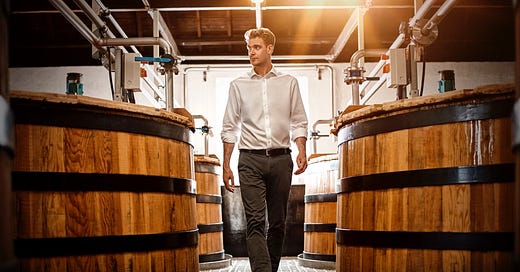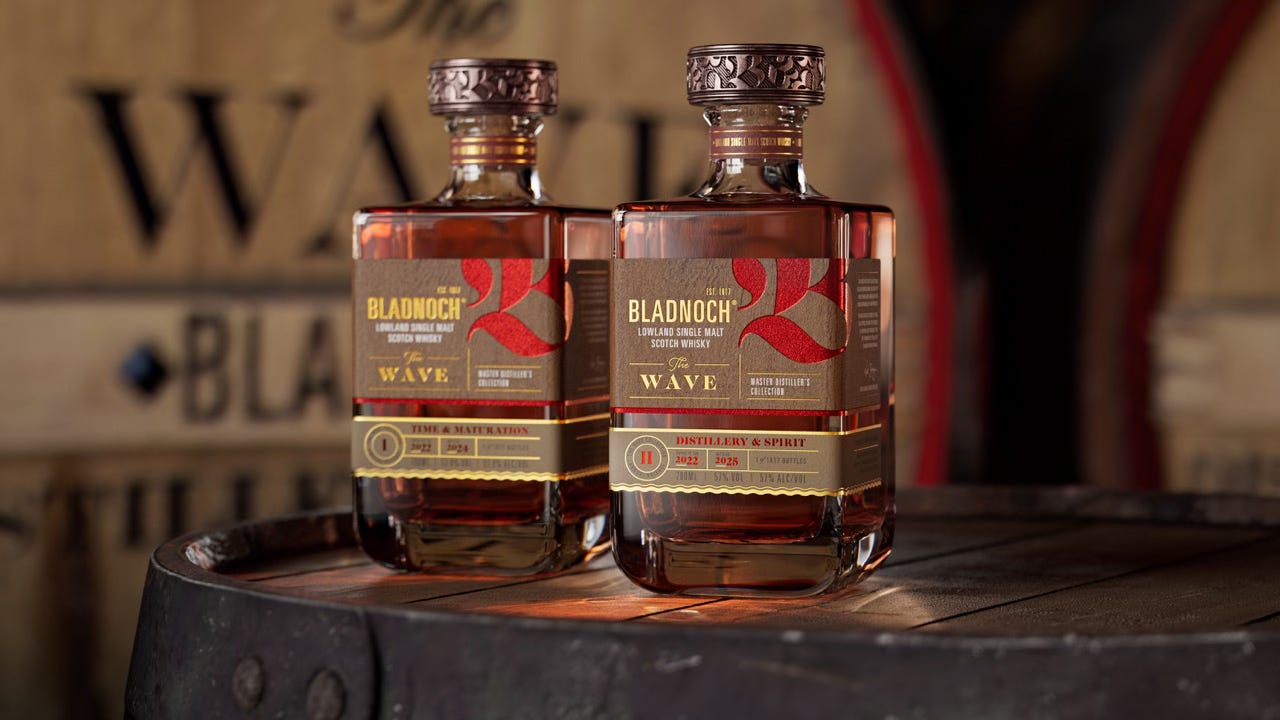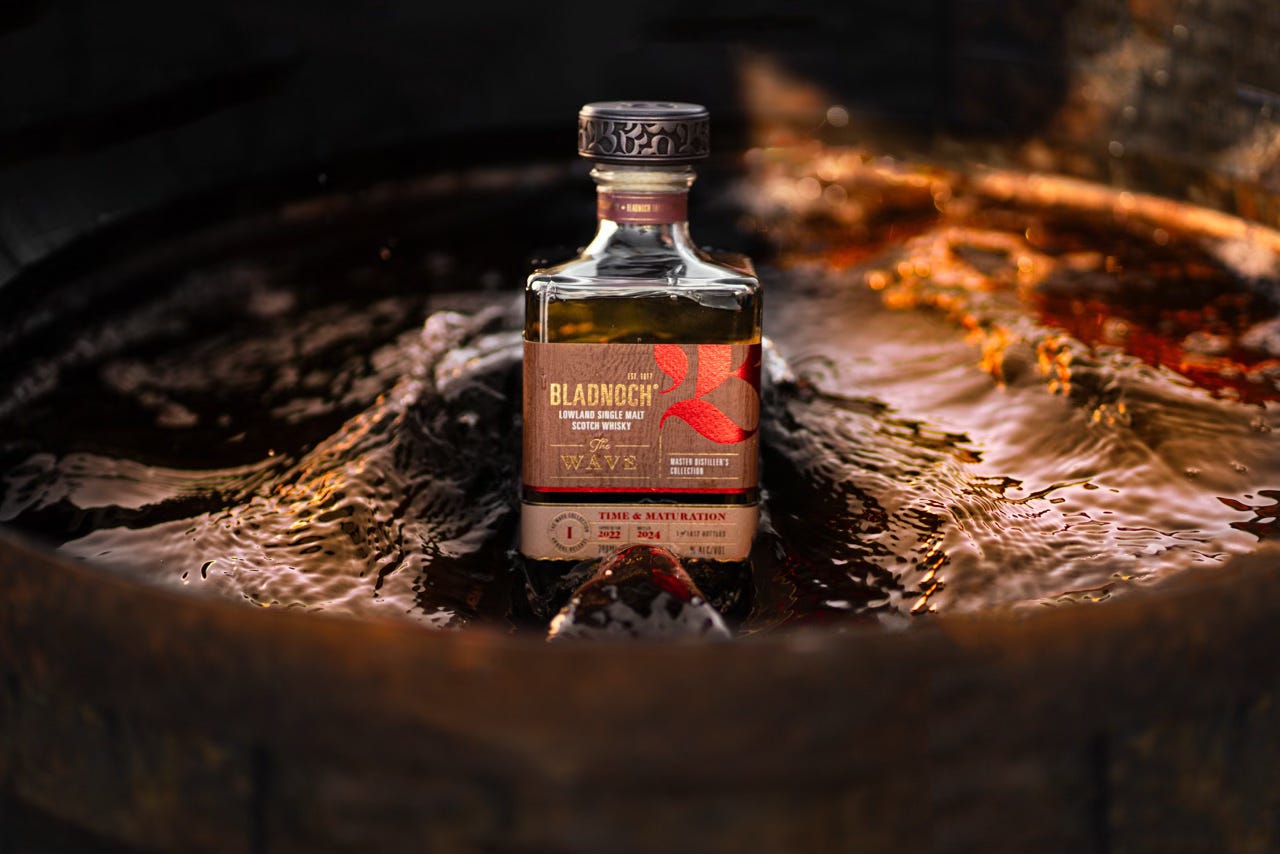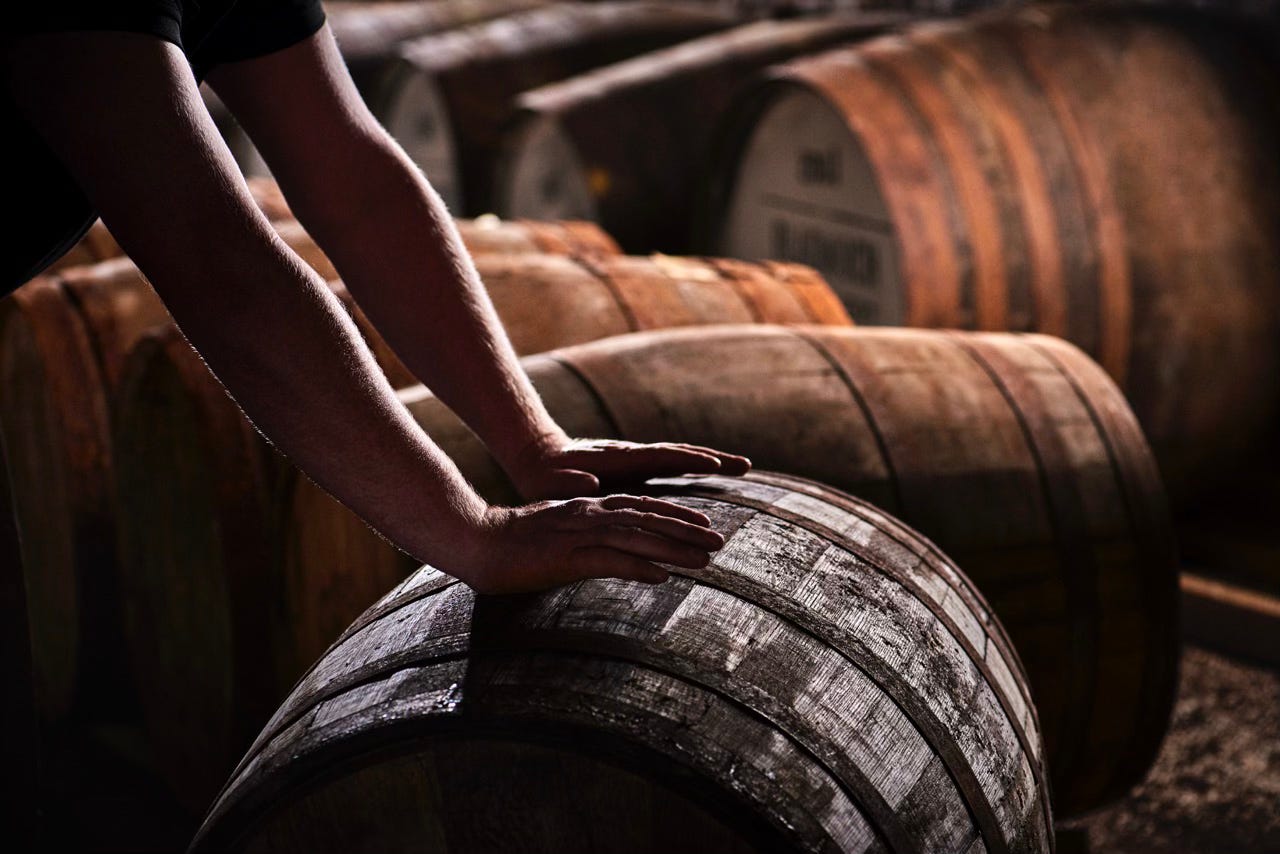Bladnoch Wave I and II tasted.
The Master Distiller’s Collection: Bladnoch’s Journey from Time to Taste
Whisky often gets framed as a finished product. But with The Wave, Bladnoch invites us to witness whisky as a process, fluid, experimental, and deliberately unresolved. Led by Master Distiller Dr Nick Savage, each release explores one of Bladnoch’s five production pillars, such as spirit character, time, or cask influence, layered across time using a system of progressive marrying tuns.
Rather than relying on age statements or limited-edition scarcity, The Wave aims to reveal the underlying DNA of Bladnoch’s whisky. Every year, remnants from the previous release are carried forward into the next, making each Wave not a standalone, but part of a continuous composition. Savage calls this “an infinite whisky voyage,” where the whisky itself documents the evolution of thought, flavour, and time.
A Southern Distillery with Global Intentions
Located not too far from the English border in Dumfries and Galloway, Bladnoch holds the unusual distinction of being Scotland’s southernmost whisky distillery. Known as the “Queen of the Lowlands,” it has a style that’s just as distinctive: floral and fruity, which Dr Nick Savage calls “refreshing, but with depth.”
Bladnoch draws its water from the River Bladnoch, a slow-moving source that adds to its distinctive Lowland character. The distillery's location also benefits from an unusually mild microclimate. “It’s almost tropical down here,” Savage noted. “We get strange weather patterns, and that affects how we distil.” Living in Kent myself, I might question the use of the word tropical!
Founded in 1817, Bladnoch has endured long closures, ownership changes, and reinventions. In 2015, it was revived by David Prior, an Australian entrepreneur who became the first from his country to own a Scotch whisky distillery. Instead of stripping the site back, Prior honoured its legacy while installing new equipment, giving the place what Savage later described as “a 200-year-old history with a modern toolkit.”
When Savage joined in 2019 after high-profile roles at The Macallan and Diageo, the opportunity was immediate. “It was a brand-new 200-year-old distillery,” he said. “The chance to build something from scratch with old stocks, it was irresistible.”
Today, Bladnoch runs with 75-hour fermentations and tall stills with reflux bulbs. The spirit is light but structured, grassy but not thin. Over 95% of casks used are first-fill, supporting the house style rather than masking it. The fermentation time encourages the formation of esters that lean into tropical fruit and floral characteristics. “Those 75 hours give us pear drops, cut grass, and floral lift,” said Savage. “That’s who we are.”
Wave I: Time & Maturation
Released in June 2024, Wave I was the starting point for The Wave and examined one of the most critical decisions in whisky-making: when to bottle. Not in terms of age, but flavour. Savage emphasised the dynamic relationship between cask and spirit, noting that "some casks move fast and get ahead of you - others take decades and are mistakenly called poor, but can be the best with time." Each component cask in Wave I brought something different: the 1990 for depth, 2008 for balance, 2018 and 2019 for vibrancy. This range of maturation allowed Savage to 'orchestrate' rather than simply select, blending moments rather than years.
“To us, age is just a number,” Savage said. “We only select a cask when the time is right. That’s about taste, not time on paper.”
To make Wave I, Savage selected bourbon-matured casks from 1990, 2008, 2018 and 2019. The whiskies were married in a 1,500-litre Amontillado sherry tun, not for finishing, but for integration. He emphasised: “It’s not a maturation vessel. It’s a marrying vessel. You’re rounding, not ageing.”
This tun also contained remnants of Waterfall 05, the final bottling from Bladnoch’s previous series. The decision to combine them was deliberate. “This is an infinite whisky voyage,” he said. “The Wave is about connection. You’re never really starting from scratch.”
Every year, the remainder of the previous Wave’s contents is decanted into the next, creating a ripple effect. By the time Wave V is released, it will contain DNA from every release before it. Each of the five tuns is already prepared, resting in Bladnoch’s 208-year-old bluestone warehouses. “It’s a commitment,” said Savage. “You’re laying down intent, not just stock.”
A bespoke piano composition accompanied the release, designed to echo the slow layering and tonal shifts of the whisky itself.
Just 1,817 bottles were released, honouring the distillery’s founding year. It was sold exclusively in the UK and Australia.
The nose is beautifully perfumed, so much so that i found it hard to put down. It showed floral pine, honeyed barley and pear drops. A layer of coconut and old oak was also present. In the mouth it starts soft and sweet with vanilla sponge and dried apricots, building to warming spice, nutmeg, clove, and a subtle menthol edge. The 1990 cask brings a grounding weight, like aged leather and polished wood. The finish is lingering and elegant, with toasted coconut and almond, citrus oils, and a final herbal lift making it fresh, complex, and delicious.
Wave II: Distillery & Spirit
If Wave I addressed when to bottle, Wave II asks what makes Bladnoch recognisable. Savage describes this second release as “a celebration of our spirit. Everything starts with the same Lowland distillate. Everything we do after that has to respect what came out of those stills.”
He expanded on the fingerprint of the Bladnoch style - "fruity pear drops, grassiness from the long fermentation, and clarity from our reflux-driven stills", calling it the compass by which all flavour decisions are judged. "If you don't understand your spirit, how can you possibly know what a cask will do to it?" he asked.
To explore that idea, he selected four casks:
A 2019 re-charred barrel with floral perfume and ripe pineapple
Two 2018 first-fill bourbons—one fresh and citric, the other creamy and structured
A 2007 recharred European oak butt bringing honey, ginger snaps and gentle spice
“The European oak was the surprise,” he said. “Normally it dominates. But this butt sat perfectly with the rest. It gave the structure I wanted without stepping in front of the fruit.”
All were married in the same Amontillado sherry tun used for Wave I, reinforcing the cascading nature of the project.
Savage avoids marketing shorthand in his descriptions. “Most people don’t know what a firkin is,” he said. “But they know what pineapple and ginger taste like. If you understand it, you’re more likely to enjoy it.”
As with Wave I, production was limited to 1,817 bottles and released exclusively via Bladnoch’s website and distillery shop. It launched at Bladnoch’s Wave Day festival on 14 June this year, where attendees got the first chance to taste and purchase. “There was a queue before we even opened,” Savage said. “That’s the power of people who want to understand, not just collect.”
The nose has (as you might expect) pear drops, white peach and honeysuckle, with some cut grass and stem ginger. The palate is so tropical with BBQ pineapple rings and mango with soft vanilla cream, ginger snap and toasted malt. The European oak adds a gentle grip without overpowering. The finish is clean with floral notes returning, citrus peel, white pepper, and some mint. Balanced and expressive with incredible flavour.
Philosophy Over Hype
The Master Distiller’s Collection isn’t built for artificial scarcity. There are no hidden batches or future reissues. Once a Wave is gone, it’s gone. “If this is a success, we don’t make Wave 6,” said Savage. “We come up with something new. We build again.”
Transparency runs through every detail, from fermentation time and cask type to distillate style. Decisions aren’t made on marketing grounds. “You’re always walking a tightrope,” Savage said. “Some casks develop too quickly, others too slowly. The trick is knowing when to intervene.”
That intervention is rarely arbitrary. Savage relies on sensory analysis, patience, and what he calls “whisky truth”, a refusal to push liquid out before it’s ready. “You have to give it time,” he said. “But you also have to understand what kind of time it needs.”
He doesn’t believe in good or bad casks, only casks with different roles. “Sometimes the slowest are the most special,” he said. “They’re not poor. They’re patient.”
His team tracks every cask with spreadsheets filled with sensory descriptors, pear, pepper, grass, toasted barley, used to evaluate each cask's evolution.
The Road Ahead
Wave III will introduce three cask types and a new production pillar. While Savage didn’t specify the pillar, possibilities include fermentation, distillation design, or transparency, each of which has already played a supporting role in Waves I and II. “We’ve built the spine,” he said. “Now we get to explore the limbs.”
The rest of the Waves are mapped out. The marrying tuns are waiting. The spreadsheets are full of tasting notes and combinations. What’s missing is the experience of time itself, the only variable you can’t rush.
“These are Friday afternoon whiteboard ideas,” Savage said. “Some won’t work. Some might be brilliant.”
With two Waves released and three to go, Bladnoch is executing one of the most ambitious narrative-led series in Scotch whisky today. It’s part exploration, part education, and completely rooted in the honest complexities of flavour.









